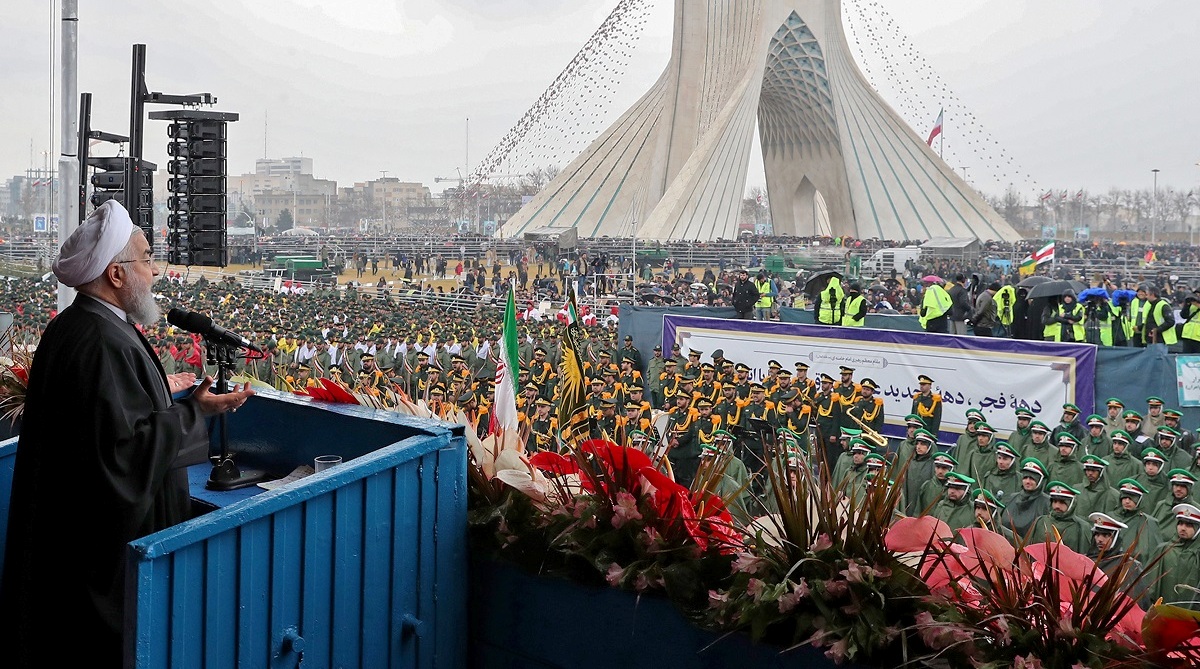Prince Harry declares US home, renounces British residency
Prince Harry officially makes the United States his primary residence, renouncing ties to the UK royal family in a significant move.
Not that the reformers have not tried to modernise Iranian society, but their efforts have come a cropper because of the omnipotent theocracy.

A handout picture provided by the Iranian presidency on February 11, 2019, shows President Hassan Rouhani addressing crowds during a ceremony celebrating the 40th anniversary of Islamic Revolution in the capital Tehran's Azadi (Freedom) square. (Photo by HO / Iranian Presidency / AFP) /
Forty years after Iran’s secular monarchy, headed by Mohammad Reza Shah Pahlavi, was toppled by Shia Islamists through a revolution spearheaded by the religious leader, Ayatollah Ruhollah Khomeini, the country ~ now with a nuclear agenda ~ appears to be floundering in quest of its moorings. The critical years between 11 February 1979 and February 2019 are a long enough time-span in terms of periodisation of history. And the probability of another revolution is not wholly unfounded. Not that the reformers have not tried to modernise Iranian society, but their efforts have come a cropper because of the omnipotent theocracy. The latter may not be as proactive as it was 40 years ago, but its influence on matters of state is profound nonetheless. For all the moderately liberal winds blowing under President Hassan Rouhani, Ayatollah Khomeini’s doctrine of Wilayat-i Faqih, or guardianship of the jurist is still the bedrock of the Islamic Republic’s system of governance. A Shia religious jurist is the Head of State and his authority is believed to be based on divine sovereignty. Quite the most remarkable feature of the praxis is that it combines both theocratic and republican features. As it turns out, the halfwayhouse between democracy and theocracy has created more complications than it has addressed. While the President and Parliament are democratically elected, the members of such pivotal institutions as the Guardian Council and the judiciary are appointed by the supreme leader (Wali-yi Faqih). Iran’s periodic tryst with democracy, as indeed its nuclear programme, is supervised by the Guardian Council. Legislation, policies and programmes must be concordant with Islamic principles. The resultant disconnect in the political system is as dire as it is uniquely Iranian. There is no other country in the Islamic bloc that has to contend with so stark a dichotomy. Aside from domestic governance, there has been a paradigm shift in foreign policy. Chiefly, Iran has ceased to be an ally of the United States, as it was till the late 1970s. In reality, it has become an enemy of Trump’s America; sanctions are but a symptom of the redefined geostrategy. International sanctions, along with the clergy’s mismanagement and endemic corruption, have resulted in a critical economic situation, marked by high unemployment and ballooning inflation. This unparalleled political system has resulted in four decades of internal conflict. Iran has had to weather tense relations with the international community. In addition to eight years of war with Iraq in the 1980s, the regime in Tehran has been grappling with sanctions for almost all of the past four decades. The crippling curbs have been imposed by the US, the European Union and the United Nations over claims that Iran has breached its nuclear obligations. The outlook is grim on the 40th anniversary of the Islamic revolution not the least because of the two pillars of authority ~ the Supreme Leader, Ruhollah Khamenei, and President Hassan Rouhani. They personify theocracy and democracy at another remove.
Advertisement